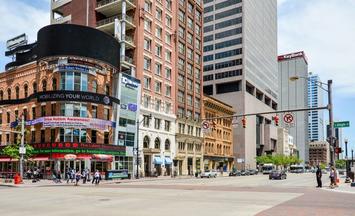
My latest article is online over at City Journal. It’s a look at Columbus, Ohio, which is doing very well these days. Here’s an excerpt:
Nine years ago, when the Columbus Partnership, an organization of 65 Central Ohio CEOs, launched the Columbus 2020 initiative, which sought to add 150,000 new jobs to the regional economy in a decade, it seemed like an unreachable ambition. After all, during the 2000s, Columbus, like most of America, actually lost jobs. But Columbus met its goal early. During 2010–17, the region added nearly 164,000 new jobs, a 17.8 percent growth rate that ranks second among major metros in the Midwest—and far outpaced the national figure of 12.5 percent.
A lot has gone right in Columbus. Its metro-area population has grown by 172,000, or 9 percent, since 2010, tops in the Midwest among larger regions. It has added almost 400,000 people since 2000, putting it fewer than 25,000 behind the much-larger Chicago metro’s increase. The Columbus metropolitan area now exceeds 2 million people, and some demographers project that it will hit 3 million by 2050.
…
Talented newcomers have helped fire up a technology startup sector, symbolized by the $1.1 billion purchase of local software firm CoverMyMeds by San Francisco–based McKesson. Columbus is home to one of the largest midwestern venture-capital funds, Drive Capital, headed by two former partners at marquee Silicon Valley venture-capital firm Sequoia. External validation came from making Amazon’s short list of 20 cities in its HQ2 competition and from winning a fierce national competition for the Transportation Department’s $50 million “smart cities” challenge grant.
…
Though it trails Sunbelt boomtowns in growth, Columbus is a strong performer, roughly comparable with other midwestern capitals like Indianapolis and Minneapolis–St. Paul. Like them, it appears to be benefiting from statewide decline, drawing new residents from struggling outer regions. Cities like Nashville and Austin draw significant national migration, but Columbus overwhelmingly welcomes its newcomers from elsewhere in Ohio. For now, this is an advantage; long-term, it may not be, in a state that’s otherwise declining. And Columbus’s cadres of “booster bros,” who can’t abide criticism of their city, will likely make it tougher to address future challenges.
Click through to read the whole thing.
This piece originally appeared on Urbanophile.
Aaron M. Renn is a senior fellow at the Manhattan Institute, a contributing editor of City Journal, and an economic development columnist for Governing magazine. He focuses on ways to help America’s cities thrive in an ever more complex, competitive, globalized, and diverse twenty-first century. During Renn’s 15-year career in management and technology consulting, he was a partner at Accenture and held several technology strategy roles and directed multimillion-dollar global technology implementations. He has contributed to The Guardian, Forbes.com, and numerous other publications. Renn holds a B.S. from Indiana University, where he coauthored an early social-networking platform in 1991.
Photo: Image via City Journal












